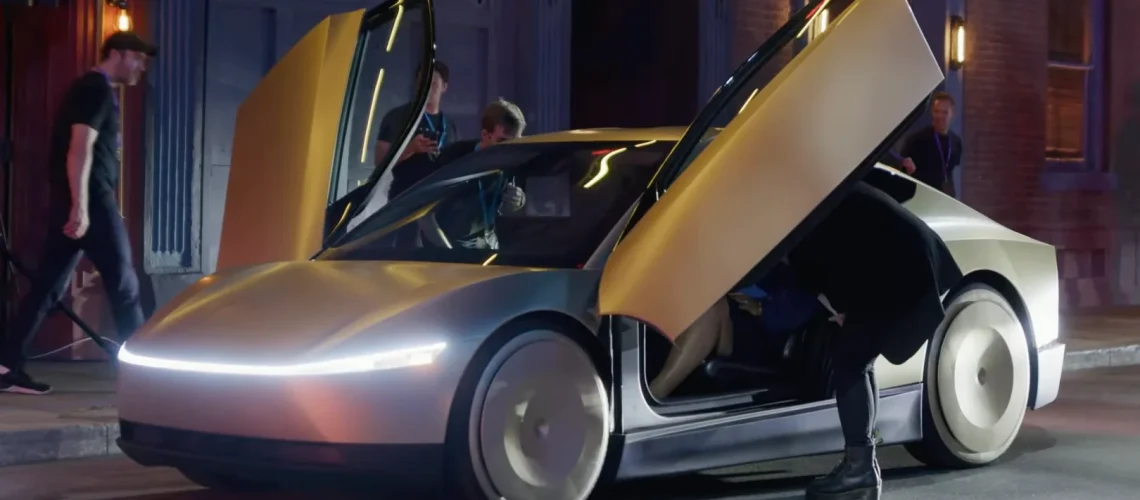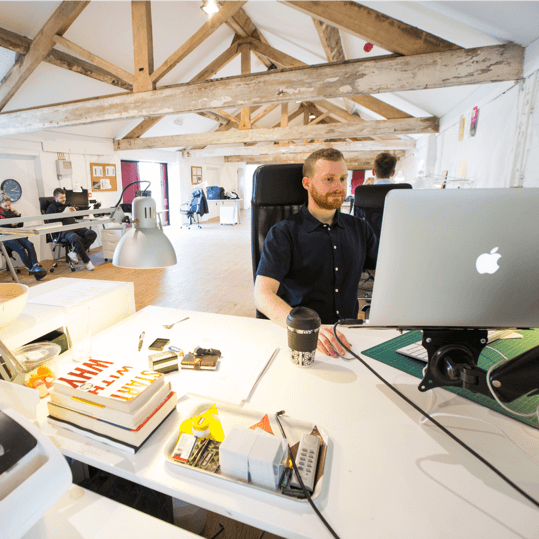Elon Musk recently unveiled his groundbreaking creation, the Cybercab robotaxi, marking a significant moment in the evolution of autonomous vehicles. This latest innovation by Tesla is designed to operate without traditional steering wheels or pedals, emphasizing a future dominated by artificial intelligence.
What Sets the Cybercab Apart
Key features that set the Cybercab apart include:
- Absence of Steering Wheels and Pedals: A bold step towards complete autonomy.
- AI-Powered Driving Capabilities: Leveraging Tesla’s Full Self-Driving technology for navigation and control.
Projected to cost under $30,000, the Cybercab is positioned as an affordable option within the autonomous vehicle market. Production is expected to commence around 2026 or 2027, aligning with Musk’s vision of a world where self-driving cars are commonplace.
By eliminating conventional controls, Tesla challenges traditional automotive design paradigms, pushing the boundaries of what vehicles can achieve when powered by advanced AI systems. The unveiling of the Cybercab not only underscores Tesla’s commitment to innovation but also highlights its ambition to lead the charge in making fully autonomous transportation accessible to a wider audience.
The Unveiling Event in Hollywood
The recent Tesla event in Hollywood drew considerable attention as Elon Musk introduced the groundbreaking Cybercab. Held amidst the glitz and glamour of the entertainment capital, the premiere set the stage for a new era in driverless technology. Attendees were captivated by this fully autonomous vehicle’s futuristic design and ambitious promises.
Public and media reactions varied significantly:
- Enthusiasts hailed it as a transformative step in automotive innovation, praising its sleek design and potential to revolutionize urban mobility.
- Skeptics, however, voiced concerns about the practicality and safety of a vehicle devoid of traditional controls like steering wheels and pedals.
This unveiling marks a pivotal moment in automotive history. The Cybercab pushes boundaries, showcasing Tesla’s commitment to pioneering autonomous driving solutions. As excitement builds around this milestone, it poses intriguing questions about the future of transportation and Tesla’s role in shaping it.
Key Features That Set the Cybercab Apart
With its innovative design and capabilities, the Cybercab is a game-changer in autonomous driving. Its most notable feature is the lack of traditional steering wheels and pedals, highlighting a fully autonomous approach driven by advanced artificial intelligence. This design not only maximizes passenger space but also emphasizes the vehicle’s independence on the road.
Key elements include:
- Sleek Exterior: The Cybercab’s streamlined shape reduces air resistance, improving efficiency, while its simple style makes it stand out from regular cars.
- Interior Layout: Without manual controls, the inside is designed for passenger comfort and entertainment, making travel experiences better.
- When compared to traditional vehicles, the Cybercab’s reliance on AI-driven systems underscores significant advancements. Traditional cars depend heavily on human input for navigation and safety; in contrast, the Cybercab utilizes sensors and machine learning algorithms to make real-time decisions, enhancing safety and reliability. This paradigm shift highlights Tesla’s commitment to leading the charge in the future of transportation.
When compared to traditional vehicles, the Cybercab’s reliance on AI-driven systems underscores significant advancements. Traditional cars depend heavily on human input for navigation and safety; in contrast, the Cybercab utilizes sensors and machine learning algorithms to make real-time decisions, enhancing safety and reliability. This paradigm shift highlights Tesla’s commitment to leading the charge in the future of transportation.
Musk’s Vision for a Fully Autonomous Fleet
Elon Musk’s vision for the future of transportation is nothing short of revolutionary. At the heart of this transformation are self-driving cars powered by Tesla’s Full Self-Driving technology. Musk envisions a world where human intervention in driving becomes obsolete, paving the way for unprecedented levels of safety and efficiency in future mobility.
Key Elements of Musk’s Vision
- Autonomous Ecosystem: Tesla aims to dominate the self-driving car industry by creating an integrated ecosystem where vehicles operate seamlessly without human drivers.
- FSD Technology: This proprietary system is designed to handle complex traffic scenarios autonomously, reducing the margin for human error.
- Strategic Deployment: Initial focus on tech-forward states like California and Texas, which are likely to embrace such innovations more readily.
Elon Musk’s unveiling of the ‘Cybercab’ robotaxi signals a bold step towards this autonomous utopia, reinforcing Tesla’s commitment to lead in this transformative shift.
Challenges on the Road to Full Autonomy
Tesla’s pursuit of full autonomy continues to face significant hurdles. The company’s Full Self-Driving (FSD) system, while a major leap in autonomous vehicle technology, is still under scrutiny for its reliability. Despite its potential, it requires constant human oversight, with independent testing revealing that drivers need to intervene approximately every 13 miles — a clear indication of the system’s current limitations.
Safety regulations present an additional layer of complexity. As Tesla pushes the boundaries of innovation, it must also comply with strict U.S. safety standards. Regulatory bodies like the NHTSA are actively monitoring the technology, emphasizing the importance of balancing advancement with public safety.
Beyond hardware and AI algorithms, the path to autonomy is also shaped by supporting digital ecosystems. Tools built through web development and intuitive web design enable real-time dashboards, data analytics, and user-friendly interfaces for monitoring FSD performance. These platforms help Tesla engineers and drivers access crucial safety insights, build trust, and refine the user experience.
Ultimately, achieving a driverless future will require not only breakthroughs in AI and sensors but also robust digital solutions and clear communication with regulators and users alike. By addressing these challenges, Tesla moves closer to making Musk’s vision of a fully autonomous fleet a reality.
Competing with Waymo and Others
The autonomous vehicle market is rapidly evolving, with several key players vying for dominance. Waymo, a subsidiary of Alphabet Inc., stands out as a formidable competitor in the realm of driverless technology advancements. Their approach involves leveraging vast data sets and advanced machine-learning algorithms to achieve significant milestones in autonomous driving.
Waymo’s Progress
Waymo has successfully deployed fully autonomous vehicles in select areas, operating without safety drivers. This achievement underscores their leadership in creating reliable driverless solutions.
Competitive Landscape
Tesla’s Cybercab enters this competitive landscape with ambitious goals. While Tesla focuses on mass production and affordability, Waymo emphasizes technological precision and safety validation.
Differentiation
The Cybercab’s promise of affordability under $30,000 contrasts with Waymo’s premium services, highlighting differing strategies in capturing market share.
In this rapidly changing industry, the race to perfect autonomous technology continues, with each company bringing unique strengths and visions to the forefront.
Regulatory Scrutiny: Balancing Innovation and Safety
Elon Musk’s unveiling of the ‘Cybercab’ robotaxi sparks a wave of regulatory scrutiny. Safety concerns loom large as U.S. safety regulators intensify their investigations into Tesla’s autonomous driving technologies. The absence of steering wheels and pedals in the Cybercab raises questions about traffic law compliance and the technological readiness to handle complex driving scenarios without human intervention.
Key Issues at Hand
- Safety Concerns: Tesla’s Full Self-Driving system is under examination for its reliance on human drivers to remain vigilant, despite claims of enhanced safety over human-driven vehicles.
- Regulatory Scrutiny: Ongoing probes focus on ensuring that Tesla’s technologies meet stringent safety standards before widespread deployment.
Balancing innovation with regulatory demands remains a critical hurdle for Tesla. As Musk pushes the boundaries of autonomous vehicle technology, navigating this landscape requires addressing both safety concerns and compliance with evolving traffic laws.





